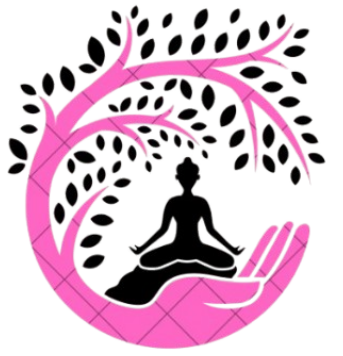Treatment for Chronic Migraines in Medina

In Medina, chronic migraine treatment involves a multi-faceted approach that blends lifestyle adjustments with advanced medical interventions. Local healthcare providers utilize headache diaries to tailor individualized care plans, while pharmaceutical options range from over-the-counter medications to prescription triptans. Innovative therapies like neurostimulation and mindfulness practices are also integrated into treatment strategies. As Medina’s medical community advances migraine research, patients are offered extensive support to address this debilitating condition. Discover how these initiatives are reshaping migraine management.
Understanding Chronic Migraines: Symptoms and Causes
Chronic migraines, a neurological disorder characterized by frequent and debilitating headaches, present a significant challenge in both diagnosis and management. Identification of triggers plays a vital role in understanding their etiology. Common triggers include stress, hormonal fluctuations, and certain foods or medications. Clinical studies indicate the importance of symptom tracking to delineate patterns and frequency, aiding in accurate diagnosis. Patients often report associated symptoms such as nausea, photophobia, and phonophobia, necessitating an extensive evaluation. A detailed headache diary is recommended to track symptom onset, duration, and intensity, providing valuable data for healthcare professionals. Despite advancements in neuroimaging and diagnostic criteria, the multifactorial nature of chronic migraines complicates their classification, emphasizing the need for personalized treatment strategies rooted in thorough triggers identification and symptom tracking.
The Role of Lifestyle Changes in Migraine Management
Although often overlooked, lifestyle modifications can substantially influence migraine management, offering non-pharmacological strategies to reduce attack frequency and severity. Evidence indicates that implementing mindfulness practices can enhance stress management, a known migraine trigger. Techniques such as meditation and deep-breathing exercises have been shown to decrease psychological stress, potentially minimizing migraine episodes. Concurrently, adherence to proper sleep hygiene is critical. Irregular sleep patterns, including insufficient or excessive sleep, can precipitate migraine attacks. Therefore, establishing a consistent sleep schedule, optimizing the sleep environment, and avoiding stimulants before bedtime are recommended practices. These lifestyle adjustments, substantiated by research, represent a proactive approach in managing chronic migraines, providing an adjunctive option to standard medical treatments within the context of thorough care.
Overview of Pharmaceutical Options for Migraine Relief
Pharmaceutical interventions for migraine relief encompass both prescription medications and over-the-counter (OTC) treatments, each offering distinct mechanisms of action and efficacy profiles. Prescription options, such as triptans and CGRP antagonists, are often employed for more severe cases and are tailored based on individual patient response and contraindications. Conversely, OTC treatments like NSAIDs and acetaminophen provide accessible, immediate relief for milder migraine episodes, though their effectiveness may vary across patient populations.
Prescription Migraine Medications
For individuals suffering from migraines, prescription medications offer a targeted approach to alleviating symptoms and reducing the frequency of attacks. These medications are broadly categorized into preventive medication and acute treatment. Preventive medications, such as beta-blockers, antiepileptics, and CGRP (calcitonin gene-related peptide) antagonists, are designed for regular use to minimize the occurrence of migraine episodes. They function by modulating neurotransmitter pathways and vascular responses associated with migraine pathophysiology. Acute treatments, on the other hand, are employed at the onset of a migraine attack to relieve pain and associated symptoms. Triptans, ergotamines, and gepants are commonly prescribed for their ability to target serotonin receptors, leading to vasoconstriction and decreased inflammatory peptide release, thereby mitigating the intensity and duration of migraine symptoms.
Over-the-Counter Treatments
When exploring options for migraine relief, over-the-counter (OTC) treatments play a significant role in managing mild to moderate symptoms. Common OTC medications include nonsteroidal anti-inflammatory drugs (NSAIDs) such as ibuprofen and aspirin, as well as acetaminophen. These agents provide pain relief by reducing inflammation and altering pain perception pathways. Evidence suggests that combination formulations, like those containing caffeine, enhance analgesic efficacy. Despite their accessibility, OTC treatments must be used judiciously to avoid medication overuse headaches. Concurrently, natural remedies are gaining attention; magnesium and riboflavin supplements have shown potential in reducing migraine frequency and severity. However, individuals should consult healthcare providers to tailor treatment plans that incorporate both OTC and natural remedies, ensuring effective and safe migraine management.
Exploring Innovative Therapies for Chronic Migraines
Despite significant advancements in medical science, chronic migraines remain a debilitating condition for many individuals, necessitating the exploration of innovative therapeutic approaches. Neurostimulation techniques, such as transcranial magnetic stimulation (TMS) and vagus nerve stimulation (VNS), have shown promise in modulating neural activity to alleviate migraine symptoms. These methods target specific brain regions involved in pain processing, offering potential relief where traditional treatments may fail. Additionally, holistic approaches, including mindfulness-based stress reduction and biofeedback, aim to reduce migraine frequency by addressing physiological and psychological triggers. Evidence-based studies indicate these therapies can be effective when integrated into a thorough treatment plan, emphasizing the importance of personalized care. Continuous research is essential to refine these approaches and improve patient outcomes in Medina and beyond.
The Impact of Dietary Changes on Migraine Frequency
Numerous studies have identified dietary changes as a significant factor in managing migraine frequency and severity. Research indicates that certain dietary triggers, such as caffeine, alcohol, and tyramine-rich foods, can precipitate migraine attacks. Conversely, eliminating these triggers from one’s diet may reduce the incidence of migraines. Additionally, nutritional supplements have emerged as potential prophylactic agents. For instance, riboflavin (vitamin B2), magnesium, and coenzyme Q10 are often recommended due to their role in energy metabolism and neuronal function. Clinical trials have shown these supplements to be beneficial in decreasing migraine frequency. It is suggested that personalized dietary modifications, coupled with appropriate supplementation, can serve as an effective adjunctive strategy in the thorough management of migraines, thereby enhancing patient outcomes.
Success Stories: Patients Finding Relief in Medina
Medina’s migraine patients have experienced significant relief through a multifaceted approach combining traditional and alternative therapies. Patient testimonials highlight the effectiveness of integrating pharmacological treatments with acupuncture, biofeedback, and cognitive behavioral therapy. Such interventions have shown promising results in reducing both the frequency and severity of migraine episodes. The supportive community within Medina plays an essential role in these success stories, fostering an environment where patients share experiences and strategies. This collective support system enhances adherence to treatment plans and encourages proactive management of symptoms. Evidence-based practices, backed by clinical studies, confirm the efficacy of this thorough regime. In Medina, the collaboration among healthcare providers and the community is instrumental in delivering tailored migraine relief solutions, contributing to improved quality of life.
Collaborations Between Local and Global Healthcare Providers
While the integration of local and global healthcare providers may seem complex, it offers a strategic advantage in advancing migraine treatment strategies. By leveraging telehealth consultations, patients in Medina gain access to specialized expertise that might not be locally available, thereby enhancing patient outcomes. Global partnerships enable sharing of cutting-edge research and clinical data, facilitating evidence-based treatment protocols. These collaborations allow healthcare providers to adopt best practices and innovative therapies tailored to individual patient needs. In addition, telehealth consultations reduce geographical barriers, ensuring continuity of care and timely interventions. The synergy between local expertise and global insights fosters a thorough approach to managing chronic migraines, ultimately contributing to improved quality of life for patients in Medina.
How Medina’s Medical Community Is Advancing Migraine Research
Medina’s medical community is spearheading advancements in migraine research through the development of innovative treatment methods and robust collaborative research initiatives. By integrating cutting-edge technologies, such as transcranial magnetic stimulation and personalized pharmacotherapy, local researchers aim to refine therapeutic approaches with increased efficacy and reduced adverse effects. In addition, partnerships with international research institutions facilitate the exchange of essential data and methodologies, accelerating the discovery of novel interventions for chronic migraine management.
Innovative Migraine Treatment Methods
Despite the complexities inherent in treating chronic migraines, the medical community in Medina is making notable strides with innovative treatment methods. Biofeedback therapy, a technique involving electronic monitoring of physiological functions, is gaining traction for its ability to help patients control migraine triggers. Simultaneously, the acupuncture benefits are recognized for their potential to reduce the frequency and severity of migraine episodes by stimulating specific points on the body.
| Treatment Method | Mechanism of Action | Reported Benefits |
|---|---|---|
| Biofeedback Therapy | Monitoring and controlling physiological states | Reduced migraine frequency and intensity |
| Acupuncture | Stimulating specific body points | Alleviation of migraine symptoms |
| Cognitive Therapy | Behavioral modification | Improved coping strategies |
| Pharmacological | Medication usage | Symptom control |
| Lifestyle Modification | Diet and exercise adjustments | Overall migraine reduction |
These advancements underscore Medina’s commitment to enhancing patient outcomes through evidence-based interventions.
Collaborative Research Initiatives
As collaborative research initiatives gain momentum, the medical community in Medina is at the forefront of advancing migraine research through strategic partnerships and cutting-edge methodologies. Key research partnerships have been established with leading universities and pharmaceutical companies, focusing on genetic and biochemical aspects of migraine pathophysiology. These collaborations facilitate the sharing of data and resources, enhancing the depth and breadth of research findings. Community engagement is integral, with local health organizations actively participating in clinical trials, ensuring diverse demographic representation. By integrating patient feedback into study designs, Medina’s researchers are refining therapeutic approaches for chronic migraines. This synergy between research entities and community stakeholders is pivotal in translating scientific discoveries into tangible clinical applications, addressing the pressing needs of migraine sufferers.
Resources and Support Networks for Migraine Sufferers in Medina
Although the challenges of managing chronic migraines can be overwhelming, Medina offers a range of resources and support networks tailored to the needs of migraine sufferers. Support groups, both in-person and online, provide shared experiences, fostering a sense of community. Local resources include specialized clinics and health professionals skilled in migraine management, offering evidence-based treatment strategies.
| Emotion Evoked | Description |
|---|---|
| Hope | Access to innovative treatment options |
| Relief | Community support and understanding |
| Empowerment | Knowledge sharing in support groups |
| Comfort | Local experts offering personalized care |
These resources are designed to improve quality of life, providing extensive approaches to managing migraines. By utilizing these support networks, individuals can find solace and practical solutions, enhancing their ability to cope with the condition effectively.
